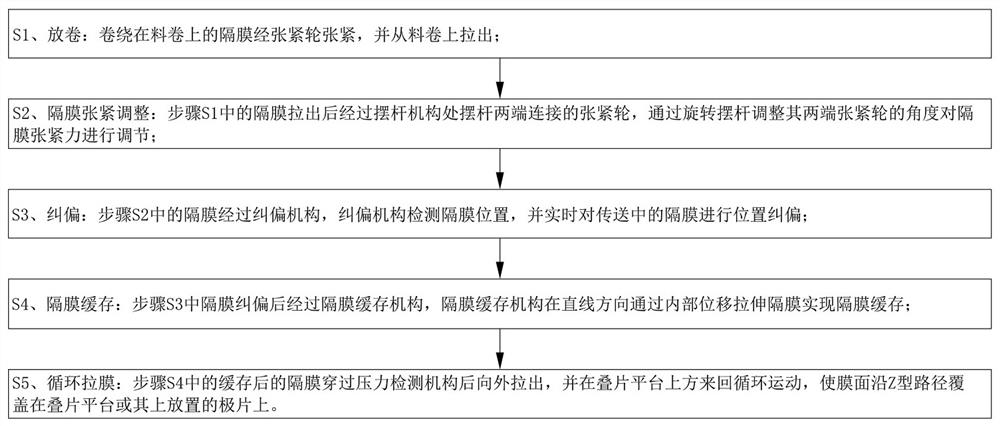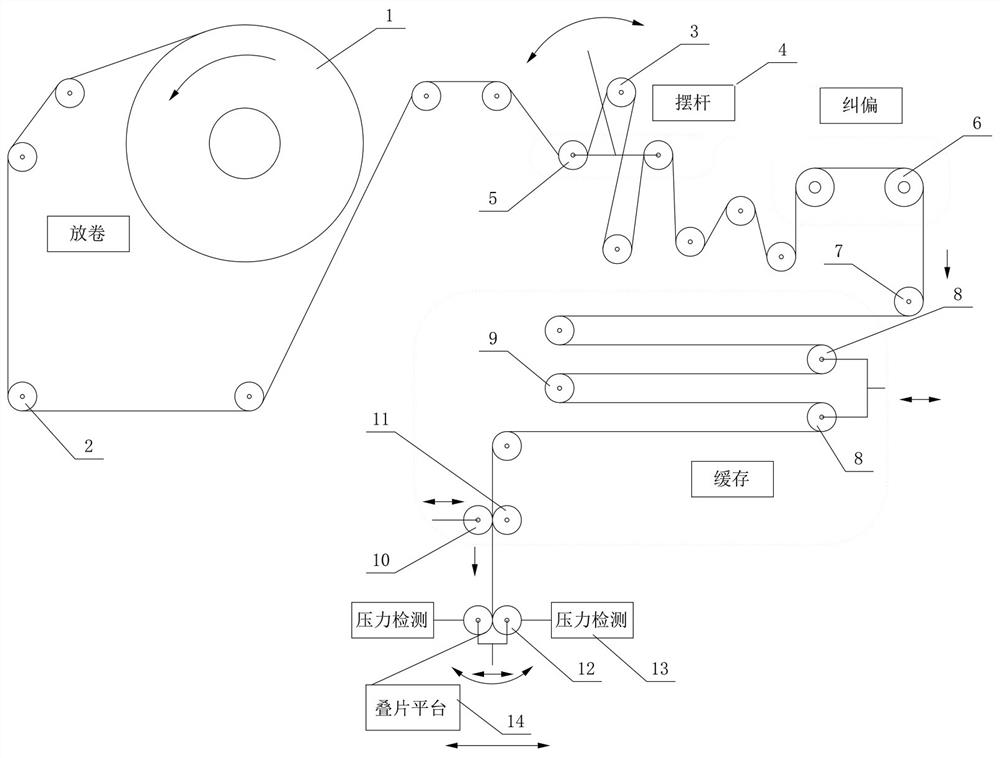Battery cell diaphragm unwinding process and diaphragm unwinding device thereof
A diaphragm and cell technology, which is applied in the field of cell diaphragm unwinding process and its diaphragm unwinding device, can solve the problems of surface wrinkles and bending of flexible diaphragm belts, uneven surface flatness of diaphragm, affecting the quality of laminations, etc. Achieve the effect of ensuring the consistency of internal tension, improving lamination efficiency and improving surface quality
- Summary
- Abstract
- Description
- Claims
- Application Information
AI Technical Summary
Problems solved by technology
Method used
Image
Examples
Embodiment Construction
[0033] The present invention will be further described below in conjunction with accompanying drawing:
[0034] Such as Figure 1 to Figure 4 As shown, the technical scheme adopted by the present invention is as follows: a cell diaphragm unwinding process, comprising the following process steps:
[0035] S1. Unwinding: the diaphragm wound on the roll is tensioned by the tensioning wheel and pulled out from the roll;
[0036] S2. Diaphragm tension adjustment: After the diaphragm in step S1 is pulled out, it passes through the tensioning wheels connected at both ends of the swing rod at the swing rod mechanism, and adjusts the tension force of the diaphragm by rotating the swing rod to adjust the angle of the rollers at both ends of the swing rod ;
[0037] S3, deviation correction: the diaphragm in step S2 passes through the deviation correction mechanism, and the deviation correction mechanism detects the position of the diaphragm, and corrects the position of the diaphragm ...
PUM
 Login to View More
Login to View More Abstract
Description
Claims
Application Information
 Login to View More
Login to View More - R&D
- Intellectual Property
- Life Sciences
- Materials
- Tech Scout
- Unparalleled Data Quality
- Higher Quality Content
- 60% Fewer Hallucinations
Browse by: Latest US Patents, China's latest patents, Technical Efficacy Thesaurus, Application Domain, Technology Topic, Popular Technical Reports.
© 2025 PatSnap. All rights reserved.Legal|Privacy policy|Modern Slavery Act Transparency Statement|Sitemap|About US| Contact US: help@patsnap.com



